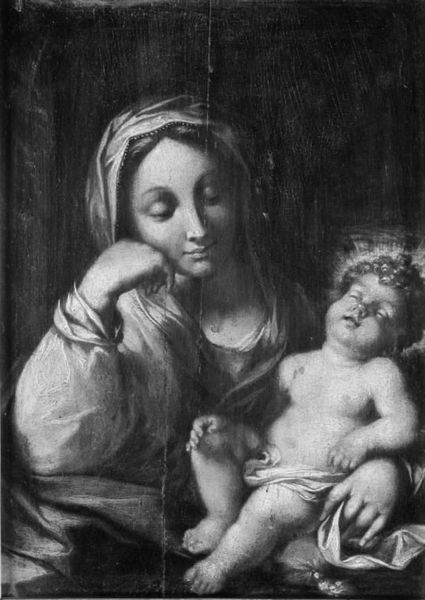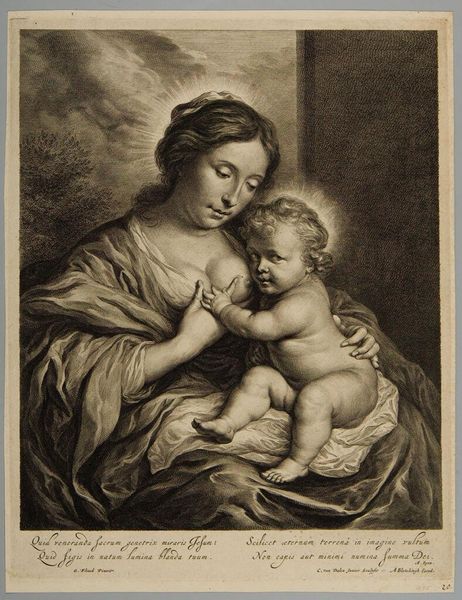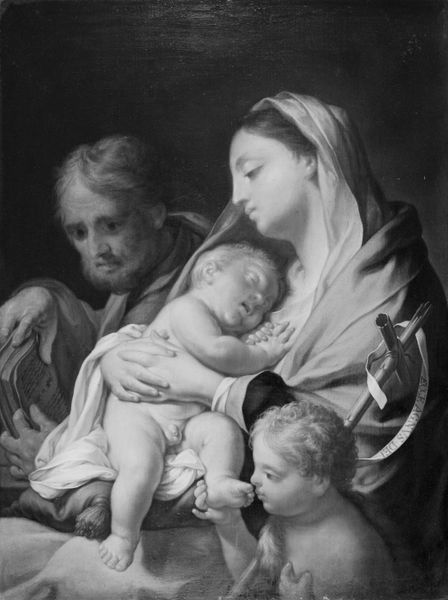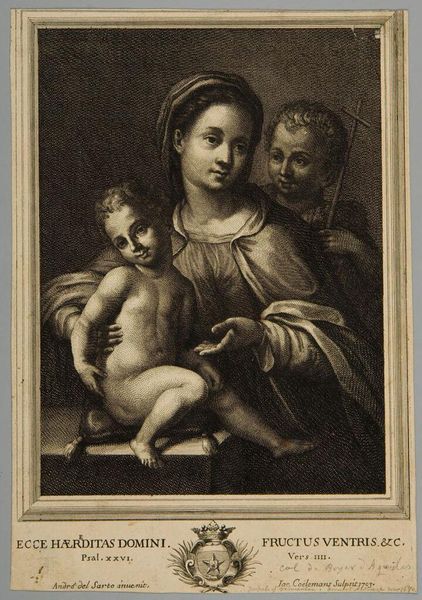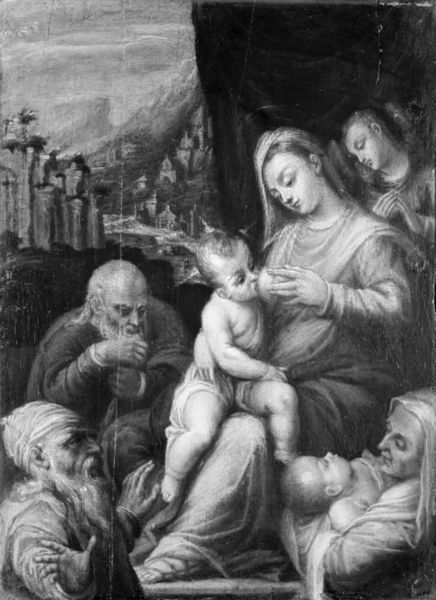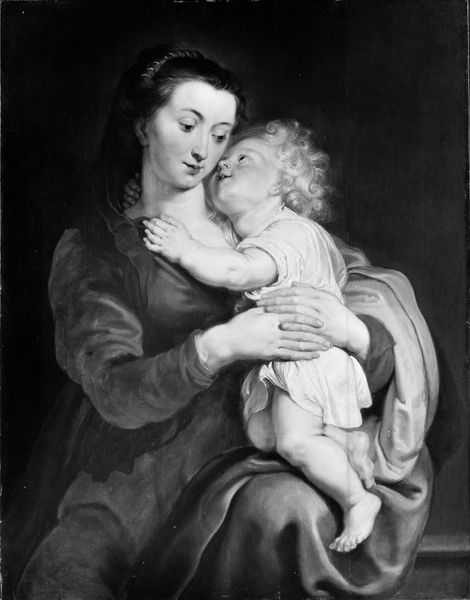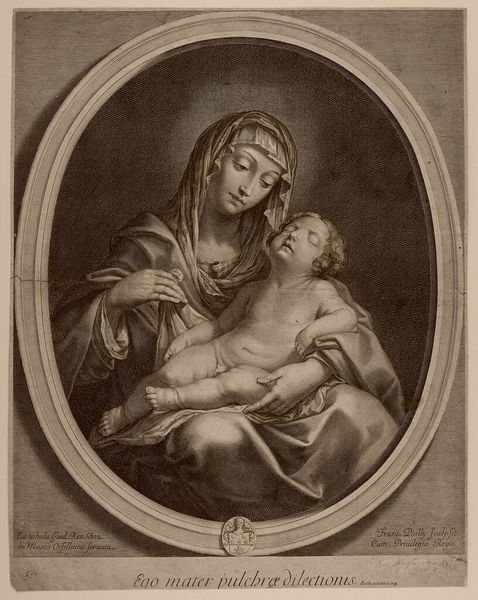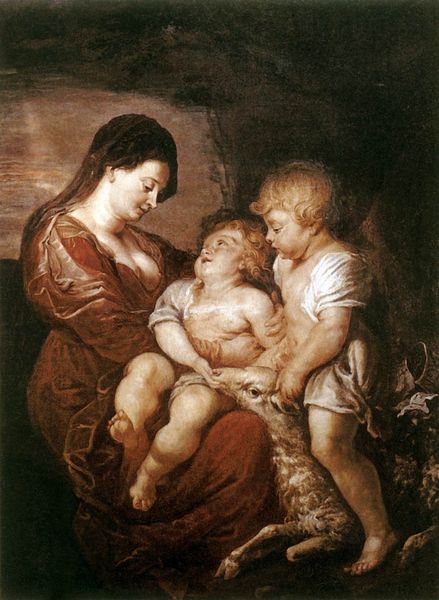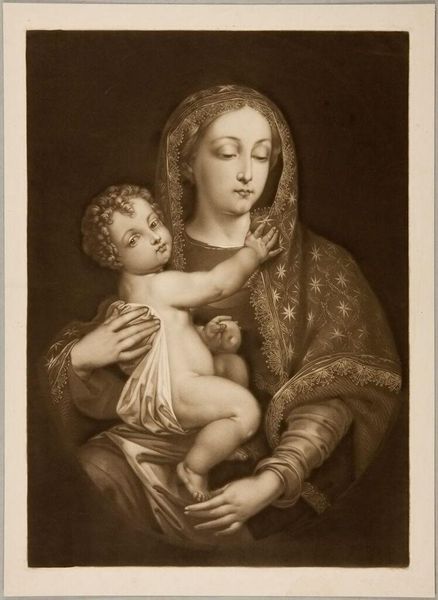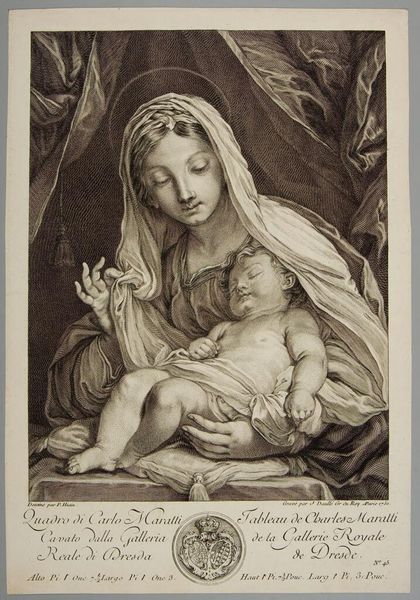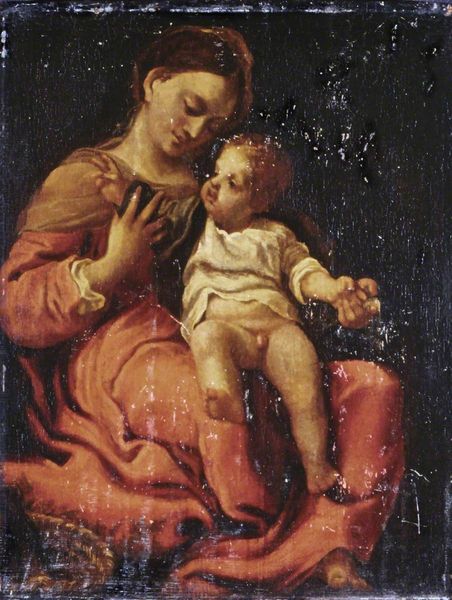
painting, oil-paint, canvas
#
portrait
#
baroque
#
portrait
#
painting
#
oil-paint
#
figuration
#
canvas
#
portrait drawing
#
history-painting
#
italian-renaissance
Dimensions: 119 cm (height) x 89 cm (width) (Netto)
Curator: There's a dreamlike quality to this piece, isn’t there? So serene. Editor: Indeed. We're looking at Carlo Maratti's "Virgin and Child," created around 1697. Currently, it resides here at the SMK, Statens Museum for Kunst. A lovely oil on canvas, wouldn't you agree? Curator: Lovely is almost too mild! Look at the Madonna's gaze—so tender, but also preoccupied. It makes me wonder what weighs on her mind, even as she sits with her sleeping child. Is it too much to describe the work as possessing a gentle melancholy? Editor: Not at all. Melancholy was a marketable feeling then, and religious images offered ample space for this emotional display. This painting emerges from the Baroque period when art served the dual purpose of glorifying the Church and evoking an intensely personal, emotional connection with viewers. Curator: I find myself drawn to her hands— so delicately weaving. It speaks of patience, but also, maybe, a subtle form of protest. Creating a world with her own two hands, whilst the patriarchy… well, you know. Editor: That’s a rich interpretation! One could also read it within the broader context of the rise of guilds and the celebration of craftsmanship, all carefully orchestrated to legitimize particular forms of labor within a rapidly evolving capitalist economy. We must remember, imagery then wasn’t always straightforward. It performed socio-political work. Curator: True, there’s always an undercurrent. I like to think about the halos too. It makes the characters otherworldly, even unreachable to our common experiences. But I find that these paintings serve as little anchors of devotion and humanity for our own spiritual needs. Does the picture provide an opening or an ending? Editor: Art always does both, doesn’t it? Maratti’s Madonna provides not only a comforting image, a domestic scene so poignantly composed but it offers us an opening into understanding the forces at play during its creation: patronage, religious authority, even nascent capitalism. All shaping what we see—and feel. Curator: I guess what stays with me most is the intimate relationship on view—not the holy figures, but their common presence in art history.
Comments
No comments
Be the first to comment and join the conversation on the ultimate creative platform.
